Iraq War's 10th Anniversary (100 Photos)
Advertisements:
Smoke covers Saddam Hussein's presidential palace compound during a massive US-led air raid on Baghdad, Iraq on March 21, 2003. Allied forces unleashed a devastating blitz on Baghdad, triggering giant fireballs and deafening explosions and sending huge mushroom clouds above the city center. Missiles slammed into the main palace complex of President Saddam Hussein on the bank of the Tigris River, and key government buildings. (Photo by Ramzi Haidar/AFP Photo via The Atlantic)
U.S. President George W. Bush, watched by Vice President Dick Cheney, speaks before signing a $355 billion military spending bill in the Rose Garden of the White House October 23, 2002. The bill gave the Pentagon a nearly $40 billion boost as it prepared for possible war with Iraq, the White House said. (Photo by Kevin Lamarque/Reuters via The Atlantic)
Iraqi President Saddam Hussein, center, talks with elite Republican Guard officers in Baghdad, on March 1, 2003. Iraq began destroying its Al Samoud 2 missiles Saturday as ordered by the United Nations and agreed with weapons inspectors on a timetable to dismantle the entire missile program, U.N. and Iraqi officials said. (Photo by AP Photo/INA via The Atlantic)
Iraqi soldiers march in the courtyard of the Martyrs Monument in Baghdad, on February 16, 2003. (Photo by Suhaib Salem/Reuters via The Atlantic)
Secretary of State Colin Powell holds up a vial he said could contain anthrax as he presents evidence of Iraq's alleged weapons programs to the United Nations Security Council in this February 5, 2003 photo. (Photo by Elise Amendola/AP Photo via The Atlantic)
U.S. President George W. Bush announced the start of war between the United States and Iraq during a televised address from the Oval Office, on March 19, 2003. The United States said it had began its war against Iraq just minutes after several explosions were heard over Baghdad. (Photo by Kevin Lamarque/Reuters via The Atlantic)
British Royal Air Force personnel wait in a bunker wearing full Nuclear Biological and Chemical suits after a warning of a Scud missile attack on their base in Kuwait March 20, 2003. (Photo by Russell Boyce/Reuters via The Atlantic)
Protests against war in Iraq erupted around the world in March of 2003. This combination photo shows (from top left) large demonstrations in Madrid, New York, Jakarta, Calcutta, Rome, (2nd row) London, Berlin, Marseille, San Francisco, and Montevideo. (Photo by , in same order: Reuters, AP Photo/Louis Lanzano, Reuters/Pipit Prahara, Reuters/Sucheta Das, Reuters/Giampiero Sposito, Reuters/Peter Macdiarmid, AP Photo/Franka Bruns, AP Photo/Claude Paris, AP Photo/Noah Berger, and AP Photo/Marcelo Hernandez via The Atlantic)
An assault convoy of trucks and armored vehicles of the 101st Airborne Division's 3rd Brigade Combat Team prepare to cross into Iraq, on March 21, 2003. (Photo by Robert Woodward/Reuters/US Army via The Atlantic)
US Marines from the 2nd battalion/8 MAR, prepare themselves after receiving orders to cross the Iraqi border at Camp Shoup, northern Kuwait, on March 20, 2003. (Photo by Eric Feferberg/AFP Photo via The Atlantic)
An explosion rocks Baghdad during air strikes on March 21, 2003. The attacks far exceeded strikes that launched the war the previous day, Reuters correspondents said. (Photo by Goran Tomasevic/Reuters via The Atlantic)
Palls of black smoke from raging oil fires billow over Baghdad, on March 27, 2003. The oil-filled trenches were set off by Iraqis to try and block the visibility of U.S. warplanes and missiles. (Photo by Goran Tomasevic/Reuters via The Atlantic)
An aviation ordnance man observes rows of bombs on the hangar bay of the USS Kitty Hawk aircraft carrier in the northern Gulf, on March 30, 2003. The carriers airwing flew 104 total sorties over Iraq on March 29, and dropped bombs on targets including air defense sites, a train loaded with tanks and a surface-to-air missile site. (Photo by Paul Hanna/Reuters via The Atlantic)
A U.S. Air Force B-52 bomber returns from a mission over Iraq, after refueling from a KC-10 plane over the Black Sea, on March 28, 2003. (Photo by Jockel Finck/AP Photo via The Atlantic)
Soldiers from the 3rd Brigade of the U.S. 101st Airborne Division rest in foxholes by their convoy in a staging area in the Kuwaiti desert, on, March 21, 2003. (Photo by Jean-Marc Bouju/AP Photo via The Atlantic)
Iraqi Information Minister Mohammed Saeed al-Sahaf reads a message to the Iraqi people from President Saddam Hussein broadcast on Iraqi television, April 1, 2003. In the message Saddam said that jihad was a religious duty and he urged the Iraqi people to fight invading U.S. and British troops wherever they found them. (Photo by Reuters/Iraqi television via The Atlantic)
An Iraqi officer is held by US Marines with India Company 3rd Battalion, 7th Marines, 1st Marine Division following a gunfight at the headquarters of the Iraqi 51st and 32nd mechanized infantry divisions near Az Bayer, Iraq on March 21, 2003. (Photo by Laura Rauch/AP Photo via The Atlantic)
Iraqi soldiers stand together with their arms raised, silhouetted against a sky covered with black smoke as they surrender to U.S. Marines from the 15th Marine Expeditionary Unit in southern Iraq, on March 21, 2003. (Photo by Itsuo Inouye/AP Photo via The Atlantic)
Coalition forces commander U.S. Army General Tommy Franks tells reporters that the military campaign is on track during a press conference in the media center at Camp As Sayliyah, outside Doha, Qatar, on March 30, 2003. (Photo by Tim Aubry/Reuters via The Atlantic)
British Household Cavalry Scimitar tanks drive past burning oil wells in Southern Iraq, on March 20, 2003. (Photo by Reuters)
Iraqi civilians scream for help as they are caught in the crossfire while marines from the U.S. Marine Expeditionary Unit Fox Company [Raiders] push into southern Iraq to take control of the main port of Umm Qasr on March 21, 2003. (Photo by Desmond Boylan/Reuters via The Atlantic)
U.S. Marine Lt. Ben Reid from 1/2 Charlie Company of Task Force Tarawa waits to be medivaced after being hit with shrapnel and a machine gun round, in the southern Iraqi city of Nasiriyah, on March 23, 2003. The Marines suffered a number of deaths and casualties during gun battles throughout the city. (Photo by Joe Raedle via The Atlantic)
U.S. Marines from the 15 Marine Expeditionary Unit fire a shoulder-launched Javelin missile during a battle with Iraqi troops at the port in Umm Qasr, Iraq, on March 23, 2003. (Photo by Simon Walker/AP Photo/The London Times via The Atlantic)
U.S. Marines with 3rd Battalion, 7th Marines, 1st Marine Division, return fire after coming upon a mortar attack during an orange sandstorm on a road south of Baghdad, on March 26, 2003. (Photo by Laura Rauch/AP Photo via The Atlantic)
Ray Jacques reads the San Francisco Chronicle's war special section inside a Starbucks coffee shop in San Francisco, in this March 20, 2003 photo. (Photo by Marcio Jose Sanchez/AP Photo via The Atlantic)
Lit by Hummvee headlights, a soldier from the 3rd Brigade of the 101st Airborne Division guards Iraqis who were intercepted during dust storm on the perimeter of the division's forward base in south Central Iraq, on March 26, 2003. (Photo by Jean-Marc Bouju/AP Photo via The Atlantic)
A statue of Iraqi President Saddam Hussein, at his palace, damaged during a U.S. led air strike in Baghdad, on March 23, 2003. (Photo by Faleh Kheiber/Reuters via The Atlantic)
A U.S. Army combat engineer enjoys a cigarette as he relaxes between the cities of Najaf and Karbala as another sandstorm turned the daylight orange, on March 26, 2003. (Photo by Kai Pfaffenbach/Reuters via The Atlantic)
Two Iraqi children look through their window in New Baghdad, a suburb of Baghdad, on March 24, 2003. Oil fires burned across the city as a defense against incoming US missiles and bombs. (Photo by Jerome Delay/AP Photo via The Atlantic)
A body of Iraqi man lies by the road side north of Al Nassiriyah, on March 25, 2003. More than 30 men of military age were killed on the key northern highway by an apparent U.S. air strike on the vehicles carrying the Iraqis. (Photo by Damir Sagolj/Reuters via The Atlantic)
In this image from video seen on Iraqi television on March 27, 2003, Iraqi President Saddam Hussein meets with high-ranking Ba'ath party officials. (Photo by AP Photo/Iraqi TV/APTN via The Atlantic)
A British Warrior armored combat vehicle knocks over a picture of Saddam Hussein in the city of Basra, in southern Iraq, on March 24, 2003. (Photo by Mark Richards/Reuters via The Atlantic)
An Iraqi soldier fires his AK-47 rifle into reeds on the banks of the Tigris river in Baghdad, on March 23, 2003 after reports that U.S. or British pilots may have ejected over the city. Television reports showed Iraqi soldiers shooting into the Tigris river and in boats, apparently searching the water for pilots. (Photo by Goran Tomasevic/Reuters via The Atlantic)
A U.S. Army soldier atop a Humvee armed with a heavy machine gun secures an area by a burning oil well in Iraq's vast southern Rumaila oilfields, on March 30, 2003. U.S. engineers moved through the oilfields on Sunday shutting down wellheads in an operation that could take months to complete. (Photo by Yannis Behrakis/Reuters via The Atlantic)
U.S. Navy Hospital Corpsman HM1 Richard Barnett, assigned to the 1st Marine Division, holds an Iraqi child in central Iraq, on March 29, 2003. Confused front line crossfire ripped apart an Iraqi family after local soldiers appeared to force civilians towards positions held by U.S. Marines. (Photo by Damir Sagolj/Reuters via The Atlantic)
U.S. Marines from Lima Company, a part of a 7-th Marine Regiment, walk in front of the Martyrs Monument, during an operation to secure securing the center of Baghdad on April 9, 2003. (Photo by Oleg Popov/Reuters via The Atlantic)
A wounded Iraqi girl is treated by U.S. marines in central Iraq, on March 29, 2003. The four-year old girl, blood streaming from an eye wound, was screaming for her dead mother, while her father, shot in a leg, begged to be freed from the plastic wrist cuffs slapped on him by U.S. marines, so he could hug his other terrified daughter. (Photo by Damir Sagolj/Reuters via The Atlantic)
Smoke billows from a building hit during coalition forces air raid in Baghdad, on Monday March 31, 2003. (Photo by Jerome Delay/AP Photo via The Atlantic)
An Iraqi man comforts his 4-year-old son at a regroupment center for POWs of the 101st Airborne Division near An Najaf, Iraq in this March 31, 2003 photo. The man was seized in An Najaf with his son and the U.S. military did not want to separate father and son. (Photo by Jean-Marc Bouju/AP Photo via The Atlantic)
The inside of the Sheraton Hotel, scene of alleged looting, in Basra, southern Iraq, on April 8, 2003. (Photo by Simon Walker/Reuters via The Atlantic)
U.S. Defense Secretary Donald Rumsfeld speaks to the press at a Pentagon briefing in Washington, April 9, 2003. Rumsfeld praised the progress of American-led forces fighting in Iraq but warned the fighting would continue and the military still needed to account for Iraqi President Saddam Hussein. (Photo by Rick Wilking/Reuters via The Atlantic)
The charred remains of dead Iraqi soldiers lay outside a bus hit by a U.S. tank shell on a highway between Baghdad's international airport and the city center, on April 7, 2003. (Photo by Kai Pfaffenbach/Reuters via The Atlantic)
The damaged [Al Mansur], Iraqi President Saddam Hussein's private yacht, anchored in central Basra, on April 10, 2003. (Photo by Simon Walker/Reuters via The Atlantic)
Kuwaiti firefighters secure a burning oil well in the Rumaila oilfields, on March 27, 2003, set ablaze by Iraqi military forces. (Photo by Mary Rose Xenikakis/USMC via The Atlantic)
Six-year-old Tyler Jordan is hugged by his mother Amanda while U.S. Army Chaplain Captain David Nott looks on during the funeral of the boy's father, United States Marine Gunnery Sgt. Philip Jordan, at Holy Family Church in Enfield, Connecticut, on April 2, 2003. Sgt. Jordan was killed during fighting outside Nasiriyah on March 23 in the early days of the U.S. led invasion of Iraq. (Photo by Chip East/Reuters via The Atlantic)
A U.S. Marine covers the face of a statue of Iraqi President Saddam Hussein with a U.S. flag in Baghdad, on April 9, 2003. U.S. troops briefly draped an American flag over the face of a giant statue of Hussein, as they prepared to topple it in front of a crowd of Iraqis. (Photo by Goran Tomasevic/Reuters via The Atlantic)
U.S. Marine helicopters patrol the skies over Baghdad, on April 13, 2003. (Photo by Gleb Garanich/Reuters via The Atlantic)
Iraqi Kurds wave banners and U.S. and British flags in the northern Iraqi town of Dohuk, on April 9, 2003, to celebrate the arrival of U.S. led coalition forces' in Baghdad. Iraqi Kurds shouted for joy and fired in the air on Wednesday after U.S. forces entered Baghdad. [It's all over in Baghdad], said 29-year-old Rafiq Baway, who heard the news on satellite TV in the city of Sulaimaniya. He believed it would lead to the fall of Kirkuk, the northern oil hub where Kurds accuse Saddam of expelling Kurdish inhabitants and replacing them with Arabs. (Photo by Reuters via The Atlantic)
President Bush gives a thumbs-up sign after declaring the end of major combat in Iraq as he speaks aboard the aircraft carrier USS Abraham Lincoln off the California coast, on May 1, 2003. (Photo by J. Scott Applewhite/AP Photo via The Atlantic)
Smoke from burning oil fires set ablaze by Iraqis as a shield against incoming missiles and air raids obscures Baghdad, on April 1, 2003. (Photo by Jerome Delay/AP Photo via The Atlantic)
US Army Sergeant Craig Zentkovich from Connecticut belonging to the 1st Brigade Combat Team photographs a pink bedroom at Saddam Hussein's presidential palace, on April 13, 2003. (Photo by Romeo Gacad/AFP Photo via The Atlantic)
A construction worker removes debris from inside the destroyed Education building December 11, 2003 in Baghdad, Iraq. (Photo by Joe Raedle via The Atlantic)
U.S. Army Pvt. Joe Armstrong of Alpha Company, 1st Battalion, 5th Cavalry Regiment, 2nd Brigade, 1st Cavalry Division searches the rooftop of a house during an operation in the Amariyah neighborhood of west Baghdad, Iraq, on Monday, August 13, 2007. (Photo by Petr David Josek/AP Photo via The Atlantic)
A man reads an Iraqi newspaper in the northern town of Tikrit after morgue photos of Saddam Hussein's sons Uday and Qusay were published for the first time, on July 26, 2003. Hoping to convince Iraqis that the two men were dead, the U.S. military released photos of the pair on Thursday and allowed a small group of media to view the bodies. (Photo by Faleh Kheiber/Reuters via The Atlantic)
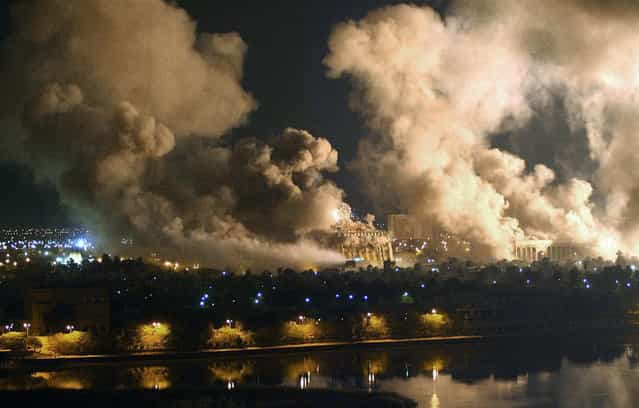
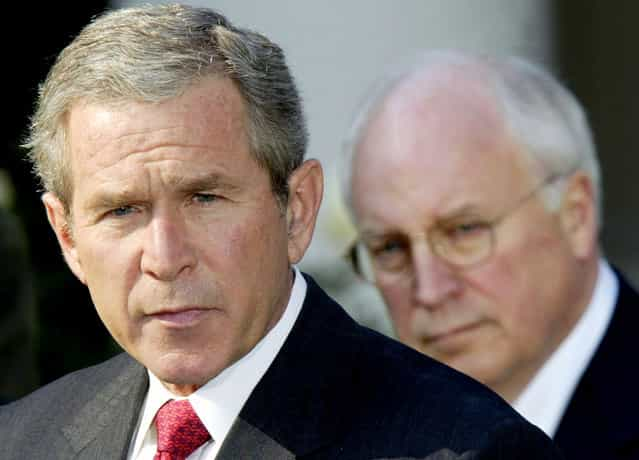
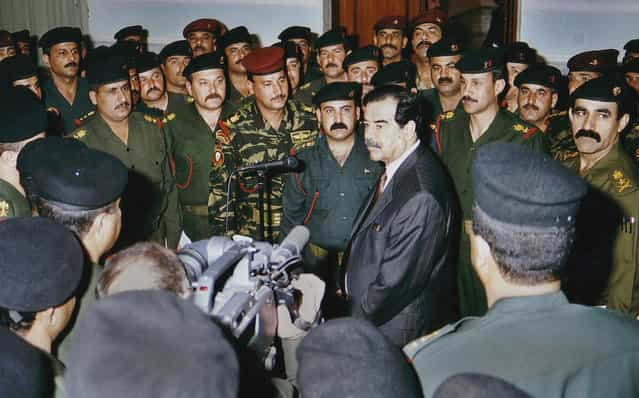


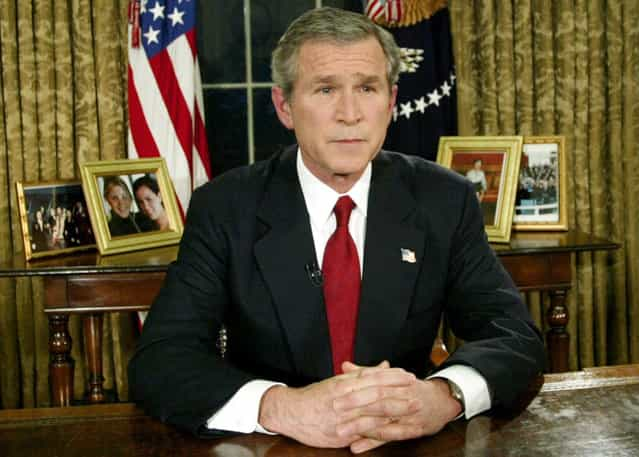
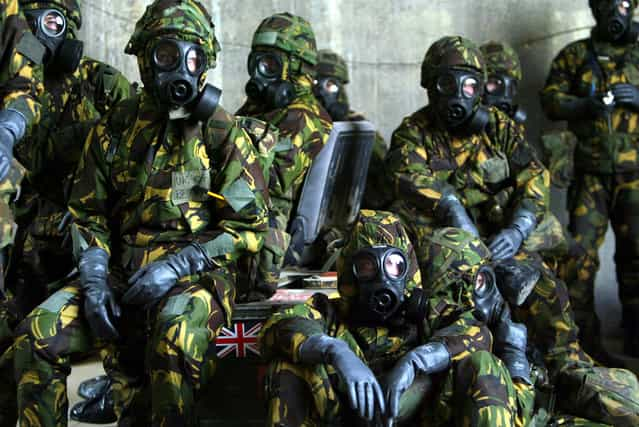
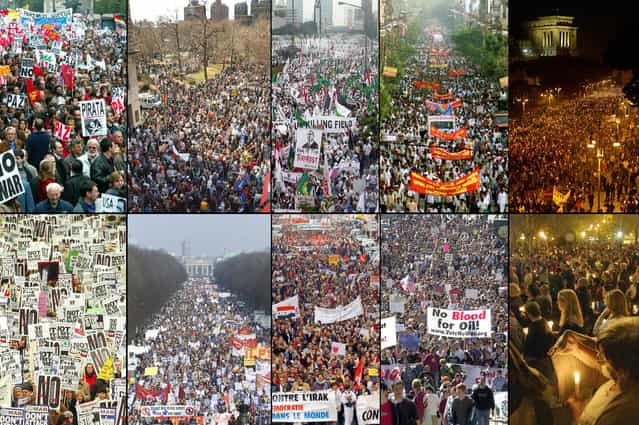
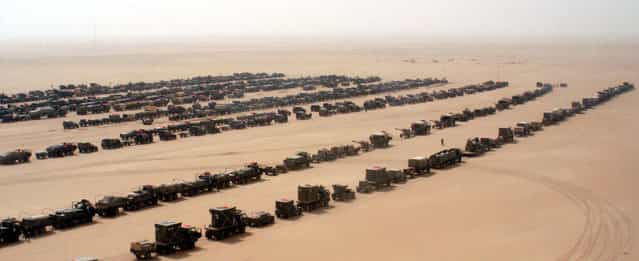
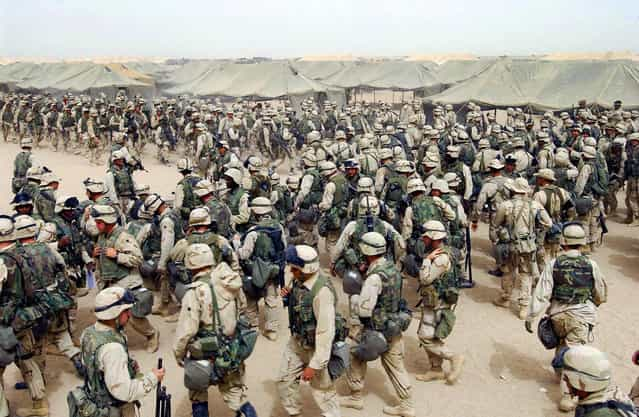
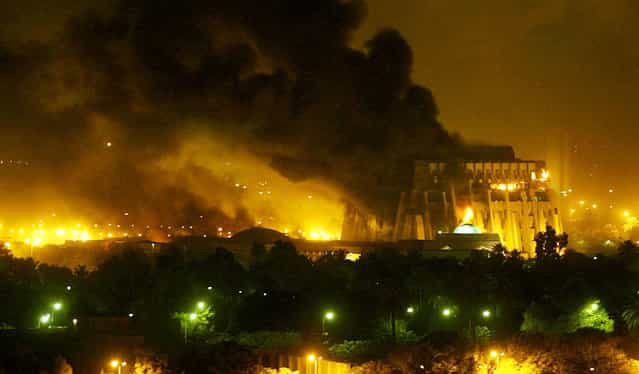
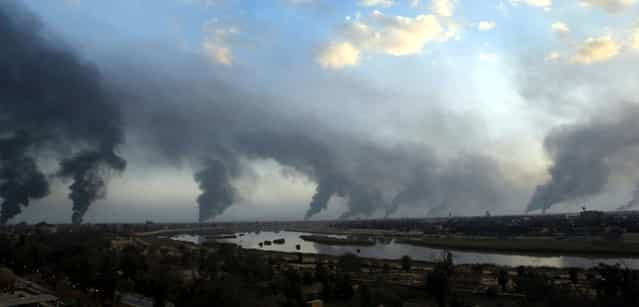
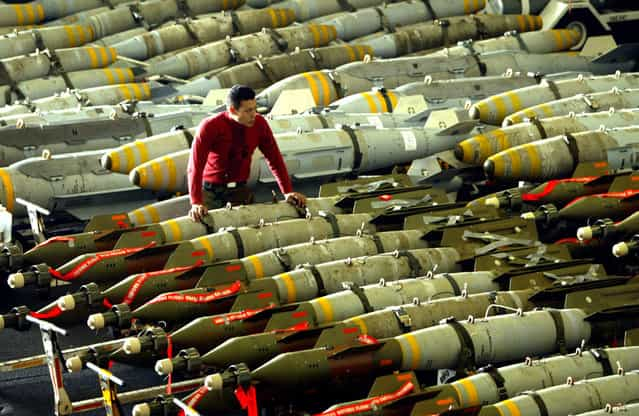
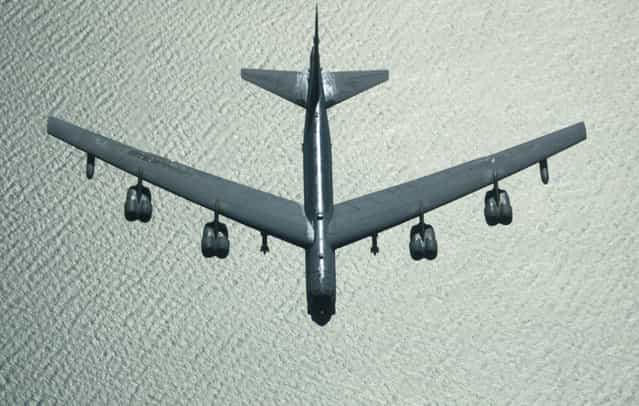
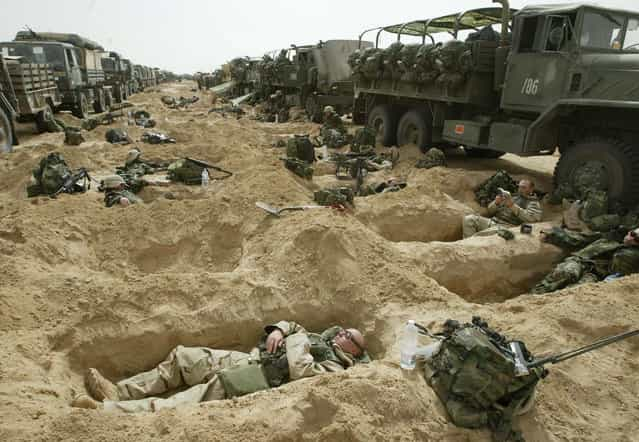
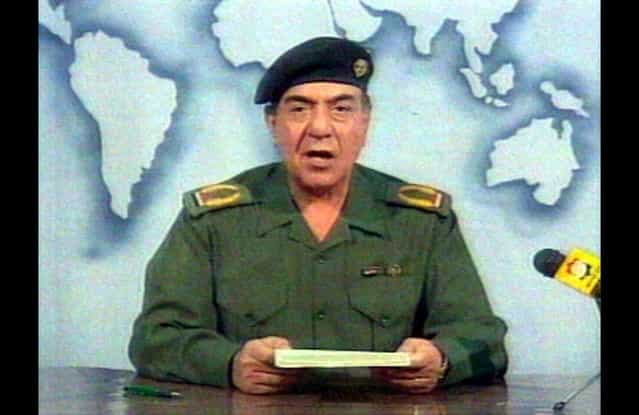

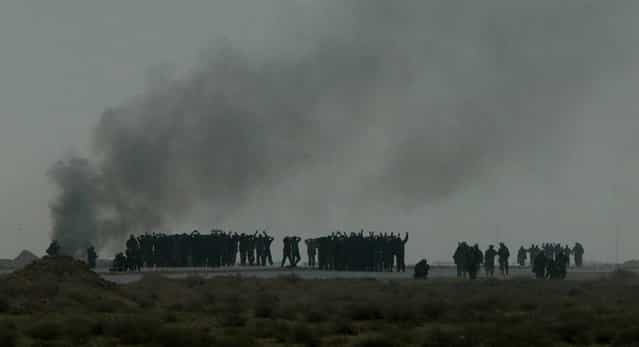
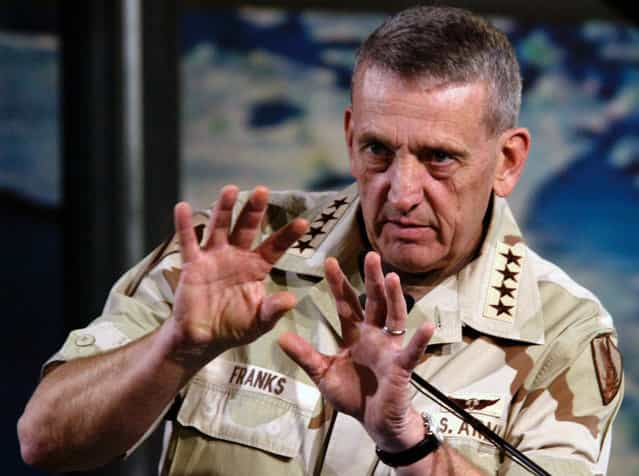
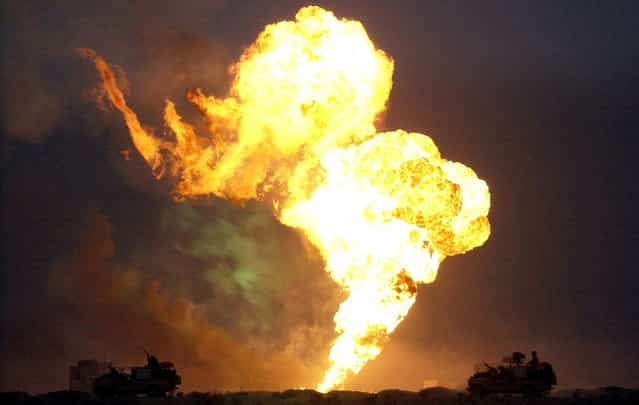
![Iraqi civilians scream for help as they are caught in the crossfire while marines from the U.S. Marine Expeditionary Unit Fox Company [Raiders] push into southern Iraq to take control of the main port of Umm Qasr on March 21, 2003. (Photo by Desmond Boylan/Reuters/The Atlantic) Iraqi civilians scream for help as they are caught in the crossfire while marines from the U.S. Marine Expeditionary Unit Fox Company [Raiders] push into southern Iraq to take control of the main port of Umm Qasr on March 21, 2003. (Photo by Desmond Boylan/Reuters/The Atlantic)](http://img.gagdaily.com/uploads/posts/sad/2013/thumbs/0000c3b8_medium.jpg)
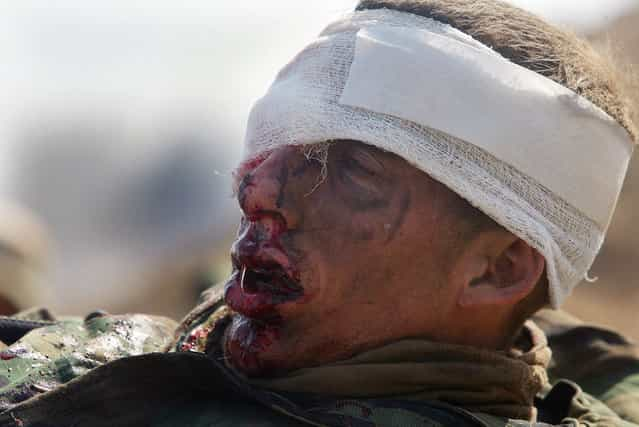
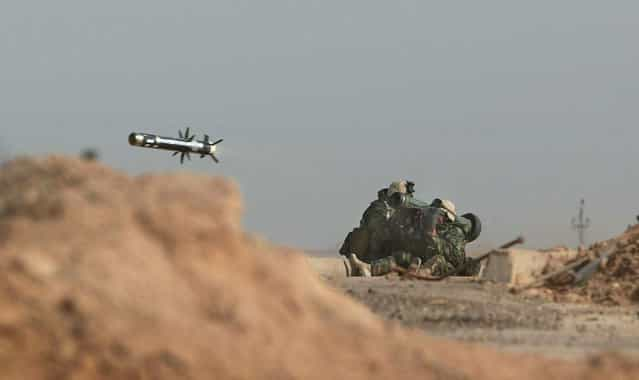
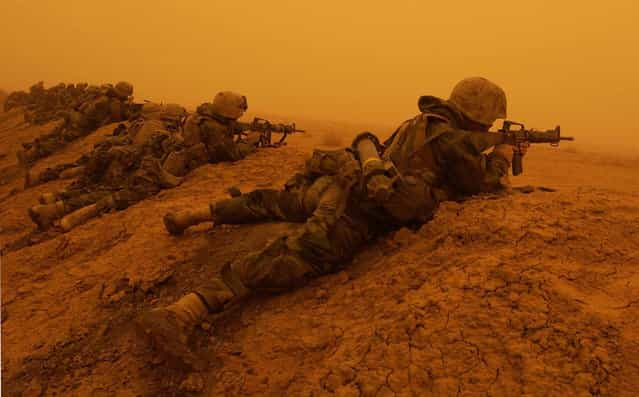
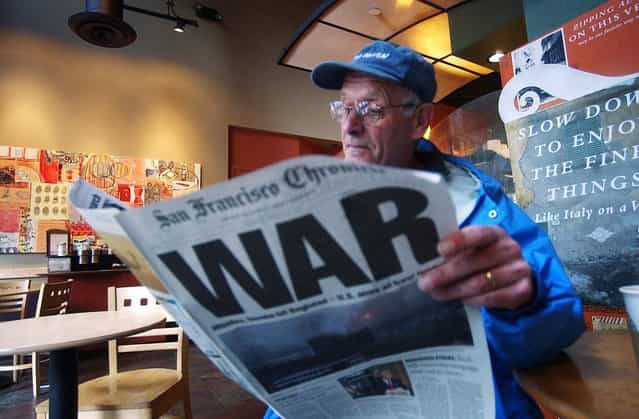
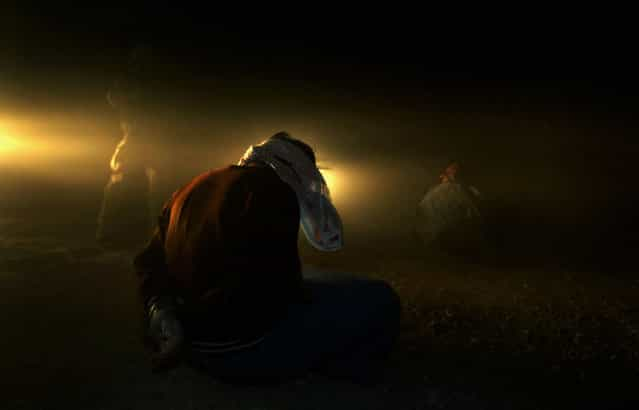



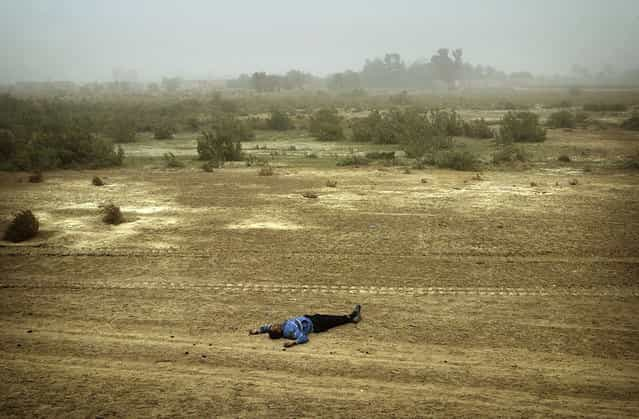
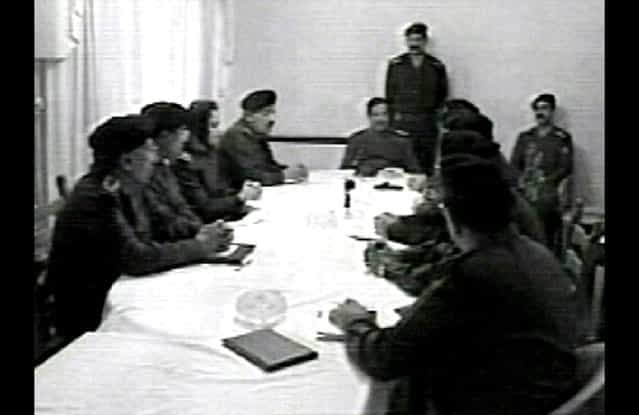

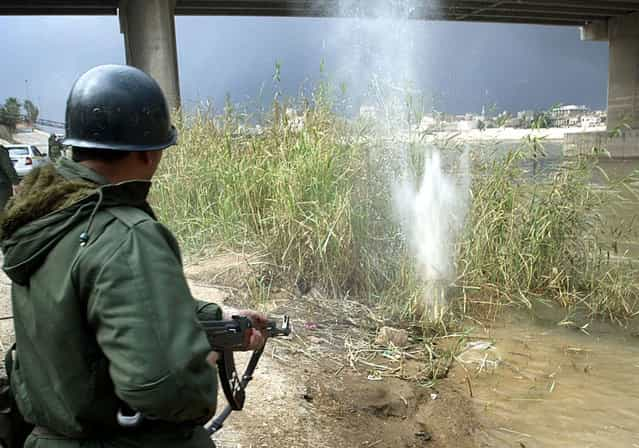

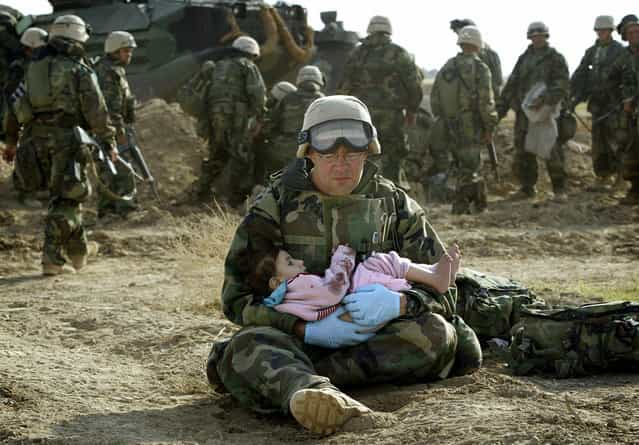
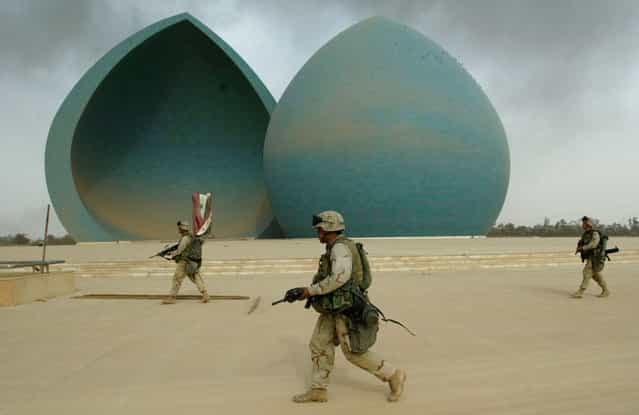
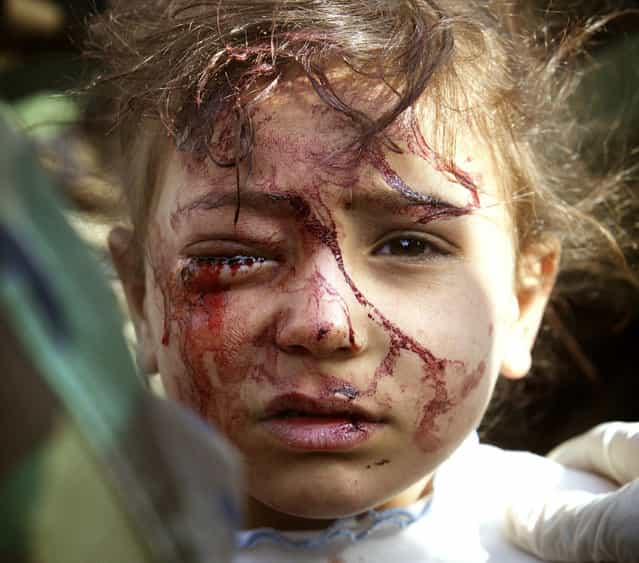

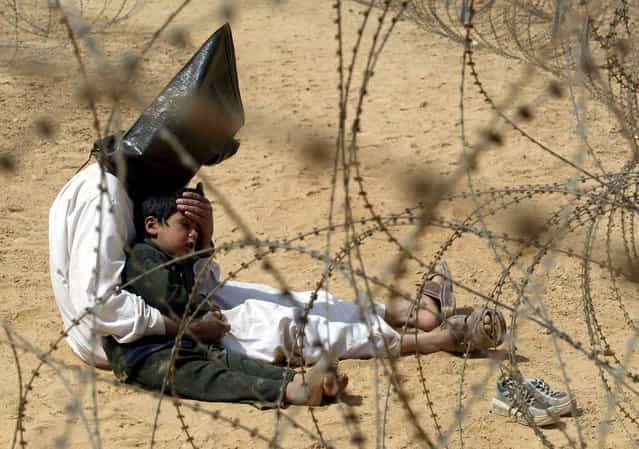

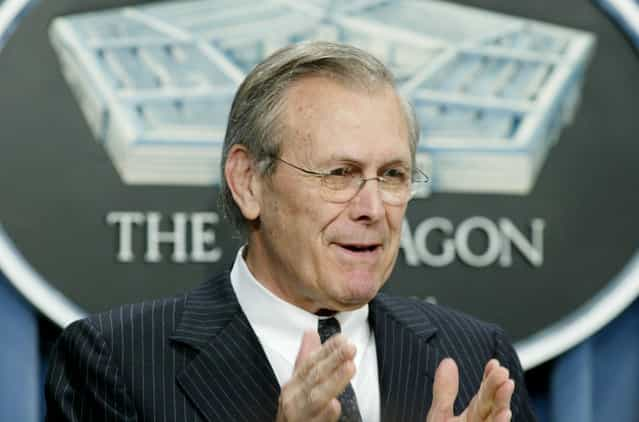
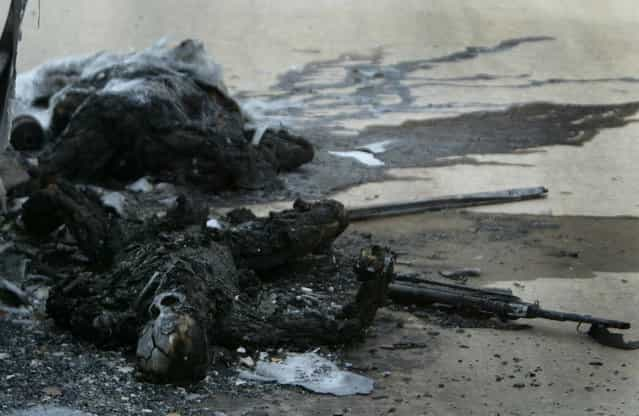
![The damaged [Al Mansur], Iraqi President Saddam Hussein's private yacht, anchored in central Basra, on April 10, 2003. (Photo by Simon Walker/Reuters/The Atlantic) The damaged [Al Mansur], Iraqi President Saddam Hussein's private yacht, anchored in central Basra, on April 10, 2003. (Photo by Simon Walker/Reuters/The Atlantic)](http://img.gagdaily.com/uploads/posts/sad/2013/thumbs/0000c3ce_medium.jpg)
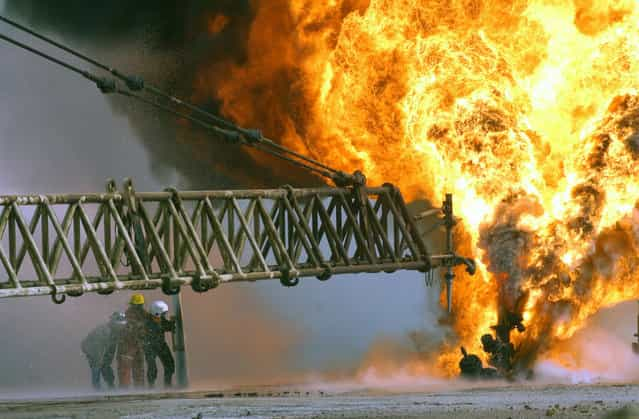
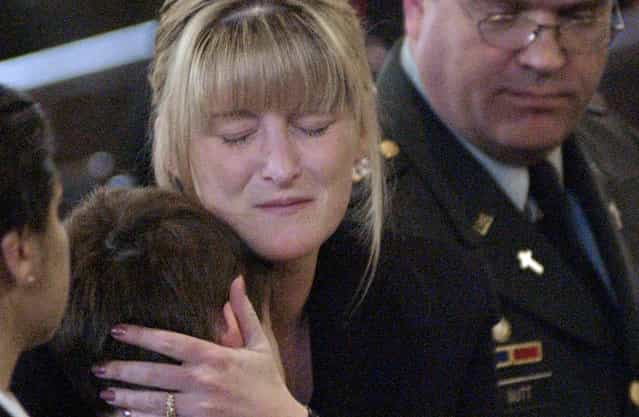

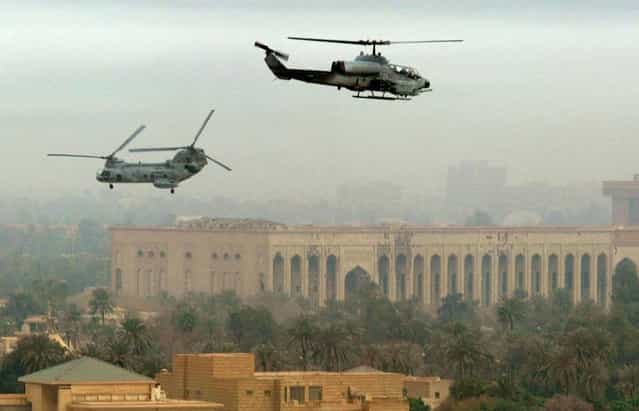
![Iraqi Kurds wave banners and U.S. and British flags in the northern Iraqi town of Dohuk, on April 9, 2003, to celebrate the arrival of U.S. led coalition forces' in Baghdad. Iraqi Kurds shouted for joy and fired in the air on Wednesday after U.S. forces entered Baghdad. [It's all over in Baghdad], said 29-year-old Rafiq Baway, who heard the news on satellite TV in the city of Sulaimaniya. He believed it would lead to the fall of Kirkuk, the northern oil hub where Kurds accuse Saddam of expelling Kurdish inhabitants and replacing them with Arabs. (Photo by Reuters/The Atlantic) Iraqi Kurds wave banners and U.S. and British flags in the northern Iraqi town of Dohuk, on April 9, 2003, to celebrate the arrival of U.S. led coalition forces' in Baghdad. Iraqi Kurds shouted for joy and fired in the air on Wednesday after U.S. forces entered Baghdad. [It's all over in Baghdad], said 29-year-old Rafiq Baway, who heard the news on satellite TV in the city of Sulaimaniya. He believed it would lead to the fall of Kirkuk, the northern oil hub where Kurds accuse Saddam of expelling Kurdish inhabitants and replacing them with Arabs. (Photo by Reuters/The Atlantic)](http://img.gagdaily.com/uploads/posts/sad/2013/thumbs/0000c3d3_medium.jpg)
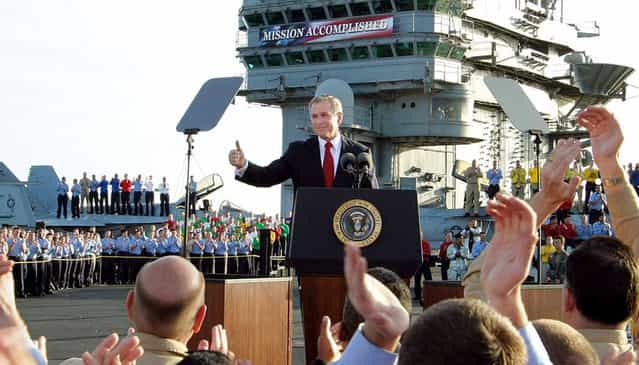
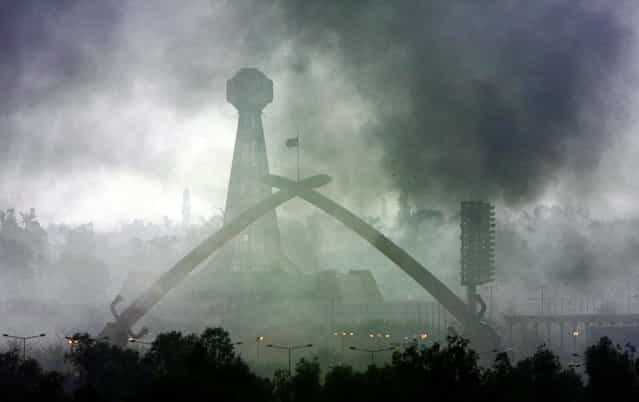
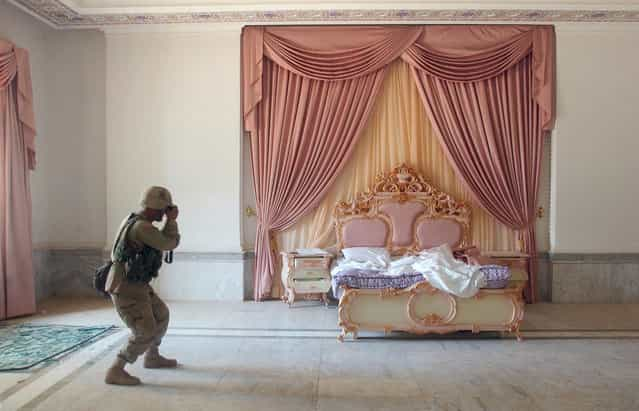
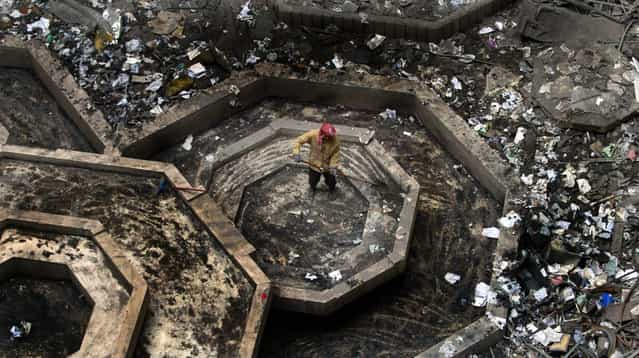

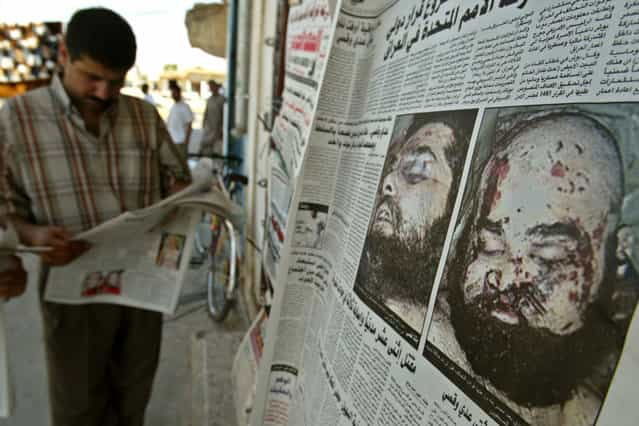

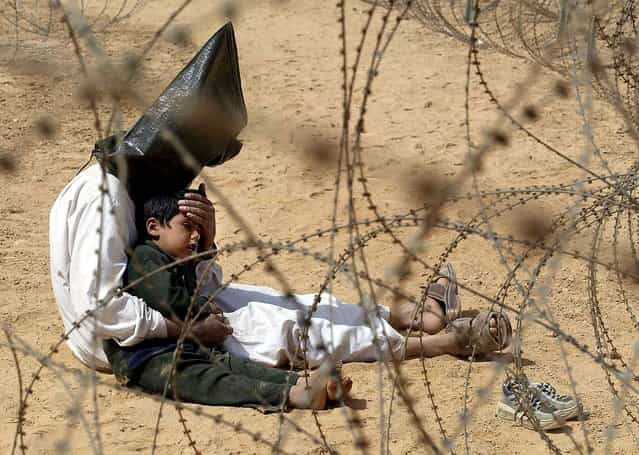
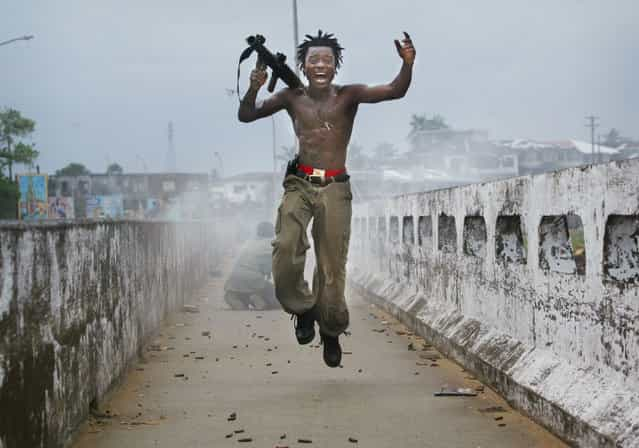
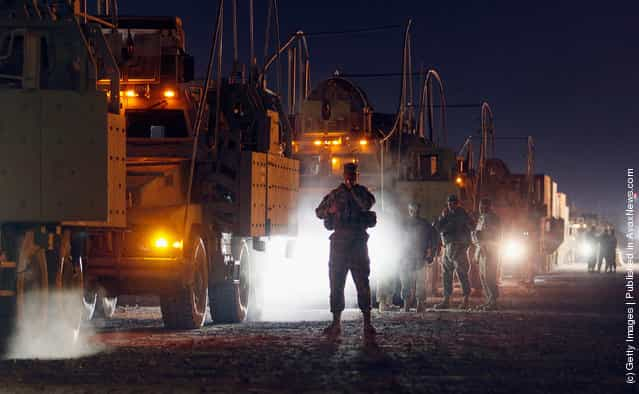
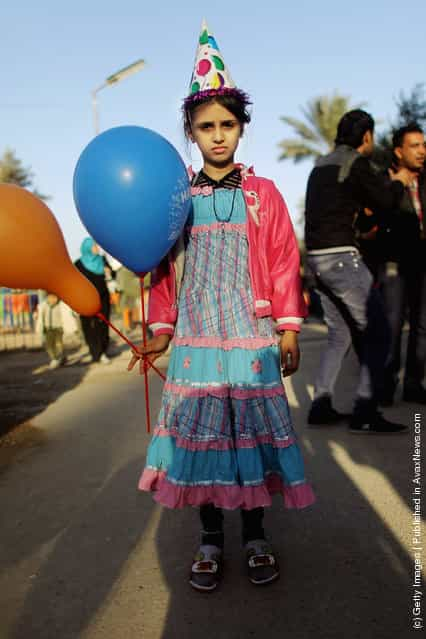
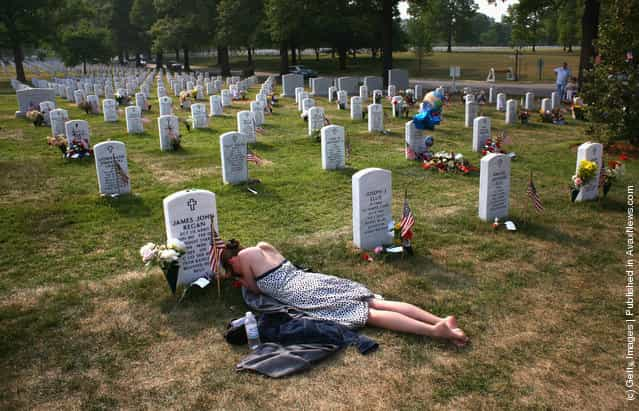
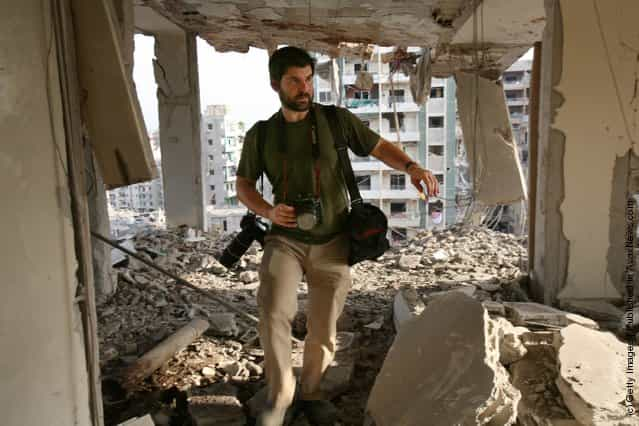
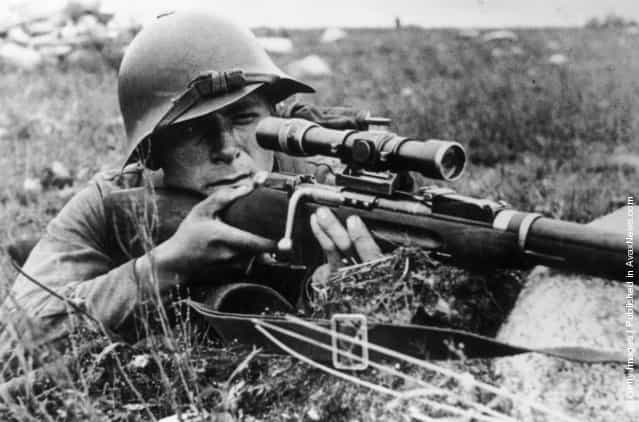
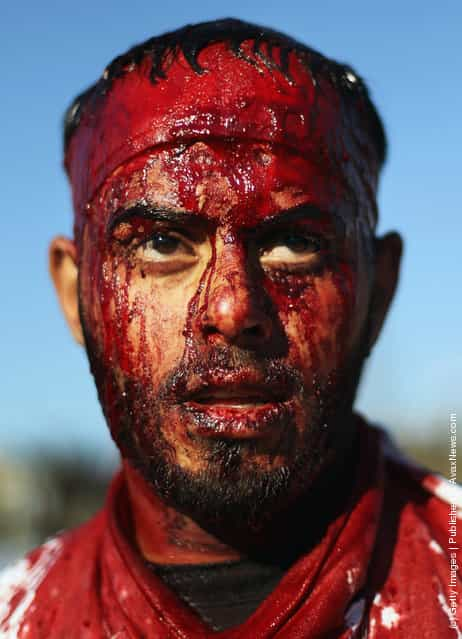

![Rare [Hybrid] Total Solar Eclipse Rare [Hybrid] Total Solar Eclipse](http://img.gagdaily.com/uploads/posts/fact/2013/short/00010c55_medium.jpg)






